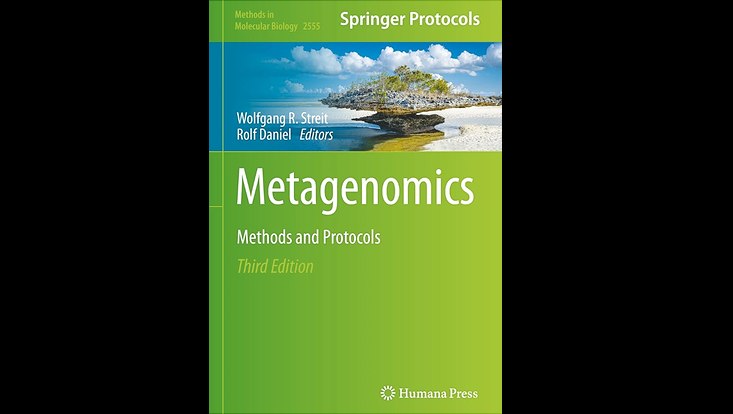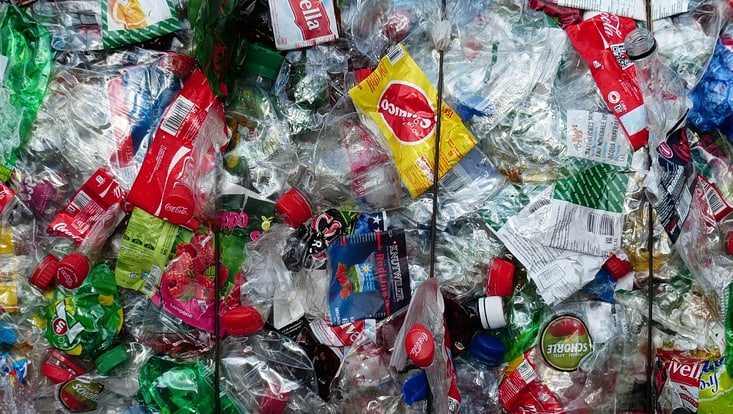Metagenomics - Methods and Protocols - Third Edition
2 November 2022, by Prof. Dr. Wolfgang Streit

Photo: Humana Press
The third edition of the book "Metagenomics - Methods and Protocols" ©2023 by Wolfgang R. Streit and Rolf Daniel describes new and comprehensive methods and instructions for a wide range of applications in working with metagenomic concepts. The focus is not only on future-oriented areas, but also on step-by-step protocols for the practical application of innovative methods.
The working group "Microbiology and Biotechnology" revised chapters to bring them up to date with the latest research and publishes three new chapters in the third edition:
"Screening Metagenomes for Algae Cell Wall Carbohydrates Degrading Hydrolases in Enrichment Cultures".
Jascha F.H. Macdonald, Ines Krohn, Wolfgang R. Streit
DOI: 10.1007/978-1-0716-2795-2_9
The efficient use of algae on an industrial scale is a major challenge for the future in order to exploit a novel, sustainable raw material. Algae have potential applications in many fields, including the energy, cosmetics, food and medical industries. As plants, algae cells have a cell wall composed of a matrix of various polysaccharides. With the help of metagenome analyses, enrichment cultures and various metabolic investigations, we developed methods to investigate bacterial communities and enzymes and discover polymers for efficient degradation of the cell wall. In optimised in vitro cultures, high rates of degradation can be detected in just a few days.
“The PET-Degrading Potential of Global Metagenomes: From In Silico Mining to Active Enzymes”
Jennifer Chow, Pablo Pérez-Garcia, Robert F. Dierkes, Hongli Zhang, Wolfgang R. Streit
DOI: 10.1007/978-1-0716-2795-2_10
Against the background of the steadily increasing amount of plastic waste in the sea and on land, it is more important than ever to find ways out of this situation. In recent years, microorganisms have been discovered that are capable of degrading artificial polymers such as polyethylene terephthalate (PET). Even if the turnover rates of the enzymes responsible for this reaction may be too low to solve the global plastic pollution problem, it is still of great societal interest to find microorganisms that are able to degrade the polymer. The corresponding enzymes, PET esterases (PETases) can be used in biotechnological processes and could contribute to a resource-saving circular economy. In this chapter, we present a sequence-based in silico screening method to find new PETases in metagenomic datasets. This method can easily be adapted to find other enzyme classes. We also list a number of assays that can be used to test the enzymes for activity on PET as well as other substrates.
“Metagenomic Screening of a Novel PET Esterase via In Vitro Expression System”
Yuchen Han, Robert F. Dierkes, Wolfgang R. Streit
DOI: 10.1007/978-1-0716-2795-2_12
Metagenomic screening is a widely applied biotechnological approach for screening of novel industrial enzymes. The traditional method of metagenomic screening is based on the functional analyses of heterologously expressed environmental genes in a suitable host, which is the bottleneck of this method. To avoid limitation from the clone-dependent system, an in vitro expression technology has been developed in combination with next-generation sequencing and bioinformatics. First, the sequence profile of a target enzyme, e.g., poly(ethylene terephthalate) esterase in this protocol, is constructed according to the sequences of well-characterized enzymes. Then, the sequence screening is performed with this computationally generated profile among all available metagenomic databases. Afterwards, the candidate genes are synthesized and expressed in vitro with RNA polymerase and translation machinery from special cell extract. Finally, such in vitro produced enzymes are directly applied for the functional analyses. Comparing to the traditional screening methods, this in vitro screening technology can not only save time and materials, but also be easily developed for high-throughput screening with an automatic pipetting robot

